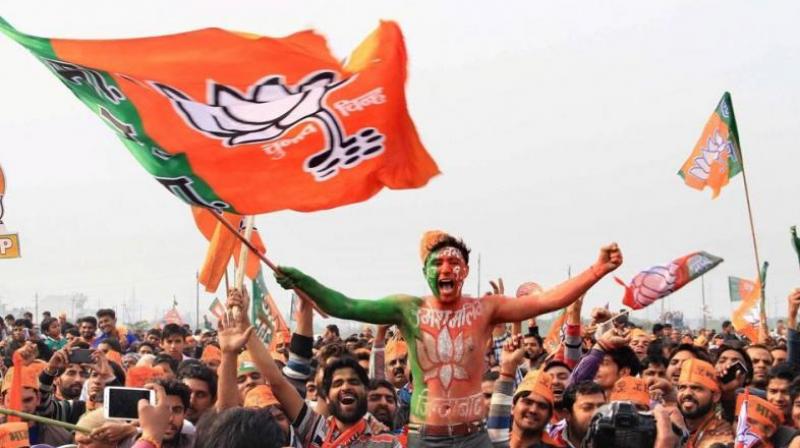Narendra Modi win in 2019 is priced in
Most foreign investors have priced in' a second term for the Narendra Modi government in the 2019 general elections.

New Delhi: Most foreign investors have ‘priced in’ a second term for the Narendra Modi government in the 2019 general elections, says a multi-country survey of investors done by global research firm UBS.
The Swiss investment bank group, which surveyed more than 50 investors in the United States and the European Union, said many global investors count a Modi win as the base case.
The UBS India report that outlines the global investors' macro concerns said investors are worried about the rupee and crude oil’s trajectory but are positive about the country’s growth path.
Authored by Tanvee Gupta Jain, economist at UBS Investment Bank, said, “We met with more than 50 investors in the US/EU over the past month. Our meetings indicated many investors have priced in a ‘Modi win in 2019’ as the base case.”
It also said investors also consider the Karnataka state election outcome, which will be out on May 15, as a near-term sentiment indicator of the political environment in India.
According to the report, most investors expect India’s economic growth to gather momentum in FY19, albeit with widening macro-stability risks (inflation, current account deficit and fiscal deficit).
The report highlighted that Brent crude oil price has recovered and now exceeds USD 75 a barrel, 20 per cent above the UBS forecast of USD 63/bbl for FY19.
According to the government’s Petroleum Planning & Analysis Cell (PPAC), a USD 10/bbl oil price rise increases India’s current account deficit (CAD) by USD 15 billion (0.6 per cent of GDP) and the fiscal deficit by 0.1 per cent of GDP if domestic fuel prices are unchanged.
A 10 per cent average crude oil price rise could increase consumer price inflation (CPI) by about 25 basis points and would dent GDP growth by 30bps if the fuel cost is passed on to consumers, the report said.
According to the report, the threshold for higher global oil prices for India is USD 70-75/bbl, wherein macro stability risks widen but remain manageable. However, oil strengthening and sustaining around USD 75-85/bbl could undermine macro fundamentals.
“In such a scenario, we see a risk of INR 3-6 per cent depreciation against the USD from the current level and at least 50 bps policy rate tightening in FY19 (depending on where global crude oil prices settle),” it said.
On India’s CAD, the report said that the country may not see a balance-of-payment surplus in FY19, as it has seen in the past few years, but India’s forex reserves at about USD 420 billion seem reasonable, based on a reserve adequacy metric, to withstand volatility due to global risk aversion.
“Building in the current oil price of USD 75/bbl, we estimate India’s CAD could widen to 2.5 per cent of GDP in FY19 (above the sustainable level of 2.2-2.4 per cent of GDP) but remain below the peak of 4.8 per cent of GDP in FY13 (affected by a macro imbalance that caused the INR to be among the Fragile Five in the world),” it said.

